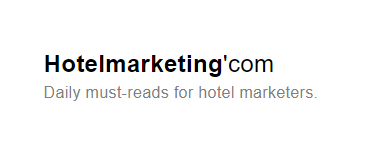data-animation-override> As hotel chains have shifted their business models over the last decade,...
In the News
Diminishing returns: The growing impact of group commissions on profits (Part I)
As an industry, we have dedicated a considerable amount of time discussing and debating the impact of OTAs and in particular, market share and costly commission structures. This stands to reason, as transient business (including corporate and leisure guests) booking through these channels represent the lion’s share of room nights for hotels. However, the issue of intermediaries and costs related to group business is of equal concern, and in some cases represents even higher commissions that continue to increase at a significant pace.
In a recent blog post, Attack of the silent profit killers, I touched on this issue: “Across our big-box hotels (15), we have seen staggering increases in group commissions in 2017, with minimal growth in group rates and ancillary spend, creating a double hit to profitability. To provide a sense for the impact, group commissions for one of the convention hotels in our asset management portfolio increased nearly 27% year-over-year, representing a US$700,000 increase YTD through September. As a percentage of group room sales, this property experienced an increase of more than a point, representing 10% of total group revenue… alarming.”
Today, we have some new data on the subject that further validates my concerns. No other organization has dedicated more time and expertise to highlight the impact of intermediary expenses and develop specific tools to help navigate this new landscape than Kalibri Labs, which recently published a special report entitled U.S. Groups & Meetings: The Economics and Complexity of Intermediation, which speaks to this very issue.
Highlights from the study:
- Current group and meetings business in the U.S. approximates US$300 billion;
- Of which, US$140 billion is spent on rooms;
- Of which, US$30 billion represents room rental revenue, and the balance spent on F&B, ground transport, audio visual and other ancillary requirements; and,
- Bringing this down to the property level, groups and meeting represents on average 15% of room nights across all segments, but in the 30% to 35% range for full-service hotels (with ADRs of $220 or more).
The study goes on to share that small meetings, defined as requiring under 100 rooms on the peak night, make up almost three-fourths of the meetings in the U.S. (although only 28% of meetings revenue). Key take away here: smaller meetings, lots of sales effort and unique space requirements needed.
The increasing role of intermediaries in group business is further compounded by the “groups and meetings ecosystem … which entails a complex process from the point at which an event is contemplated through to its execution … many intermediaries involved at various points in the value chain which adds to the process’ fragmentation and ultimately its costs.”
Just how much are these intermediaries costing hotel owners?
- In 2017, 43% of group business was intermediated (versus booked direct), and is projected to increase to 60% by 2022;
- Cost of acquisition has risen dramatically over the past five years, paying from 15% to 35% for many pieces of group business, and could conceivably double by 2022;
- Group booking intermediation is expected to evolve further to include a combination of third-party planners and third-party technology providers, so the rate of intermediation will grow; and,
- A larger percentage of smaller-sized groups (remember those representing three-quarters of group rooms booked!) will be sold through intermediaries.
What do I think brands/operators should do about it?
- Major brands should continue to leverage their size and scale to negotiate lower group intermediary commission rates and fees. Marriott International was the first to step up to this challenge, lowering commissions 3 points, effective March 31, 2018. Owners hope that other brands will follow suit.
- As the Kalibri study suggests, now is the time for the hotel industry to introduce “digital processes that improve work flow and customer experience and consider ways to avoid commoditizing the meeting experience.” Specifically, seek opportunities to increase ease of booking and establishing pathways and methodologies to reduce costs. This sounds like a call for investment in technology to me and it’s the brands that need to step up to make this happen, not only for owners but also to stay relevant themselves.




